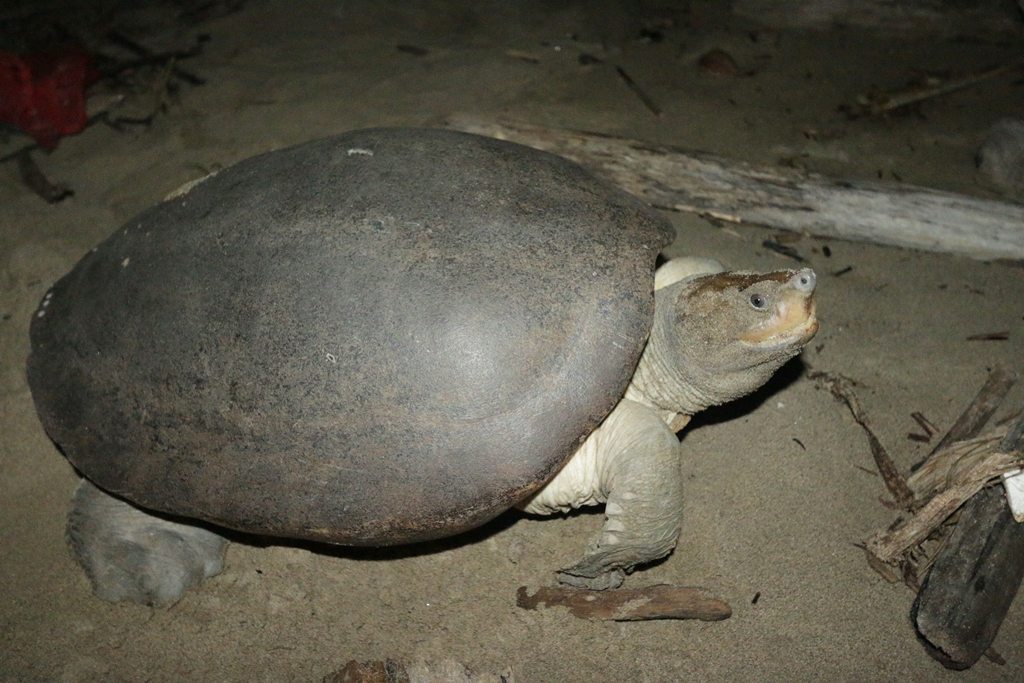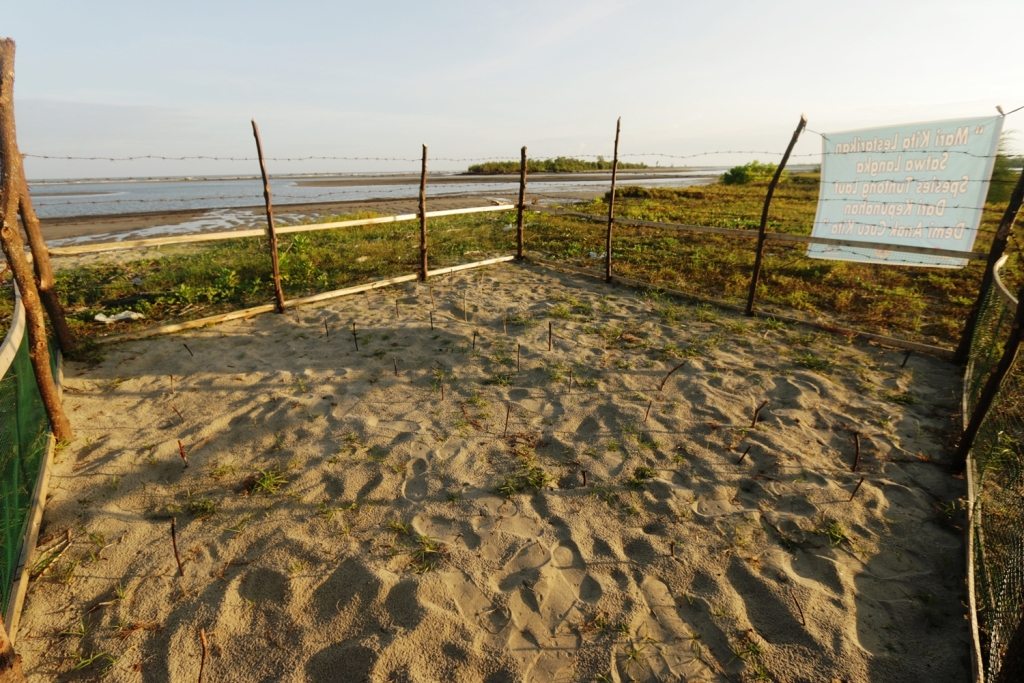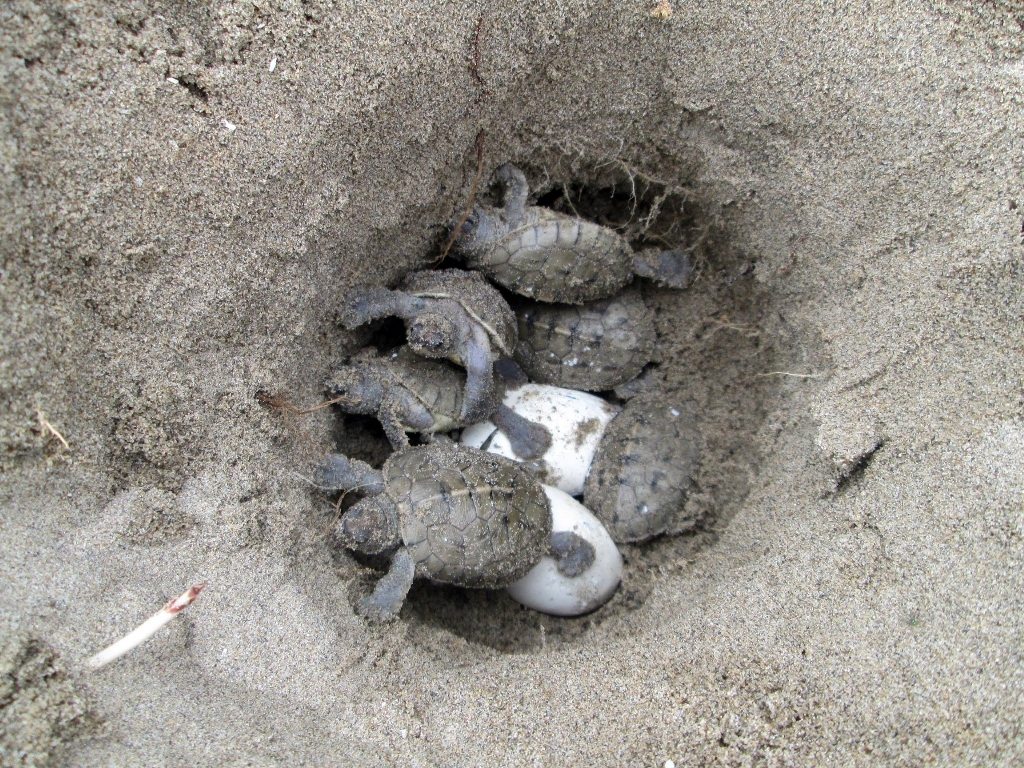The painted terrapin (also known as a painted batagur, saw-jawed terrapins or three-striped batagurs) is one of the most endangered turtles in South East Asia. It can now only be found in very small, isolated populations in Southern Thailand, the Malaysian peninsula and the Indonesian islands of Sumatra and Borneo.
We’re working with a project on the island of Sumatra in Indonesia, to help save this critically endangered species from going extinct. Alongside the SatuCita Foundation, we are working to protect what is believed to be one of the last remaining healthy populations of painted terrapin in Indonesia.

This species is currently at a very high risk of extinction, so we must do all we can to help protect it! Their numbers are so low as a result of people and predators poaching their eggs from the sandy beaches they lay them on.
In order to save the species, the project is working to increase the wild population by patrolling the nesting beaches. This monitoring is vital to securing and protecting the terrapin eggs, which are incubated and protected in situ – meaning that they’re left on the beach that they were laid on.
Hatching success
Some of the nests that were deemed to be in high risk locations are moved into specially built pens on the beach for added security and close monitoring. Joko Guntoro, founder of SatuCita Foundation, and the team were able to collect 958 eggs for protection, during the last breeding season (December to March). From this there was a 70% hatching success rate which has already given the population a welcomed boost! This is great news as in previous years, total hatch success rates have been around 30%.

Dr Gerardo Garcia, curator of invertebrates and lower vertebrates at Chester Zoo, tells us more:
“If we are to save the species from extinction then much more funding is needed in order to protect the habitat where they live. It’s the actions of a very, very small group of people like Joko that has contributed massively to the conservation of this critically endangered species.
It’s vital we support the work being done, reinforcing wild populations and working with the local communities. We have reached out to offer a helping hand – our technical skills and knowhow play an important part of safeguarding the species for the future.

After hatching the terrapins are released and monitored. Working in collaboration with local communities is a really important part of this project as they help with monitoring the nesting beaches. Many of the individuals that now help the project used to collect the eggs and are now trained to carry out the patrols. They’re also collecting vital data on the species which will provide us with a better understanding of how the turtles live.
In addition to this project, Chester Zoo is the only zoo in the UK to have painted terrapins as a safety net population in case they do become extinct in the wild. By monitoring the species at the zoo, this information can also feed into the work we’re doing in the wild.